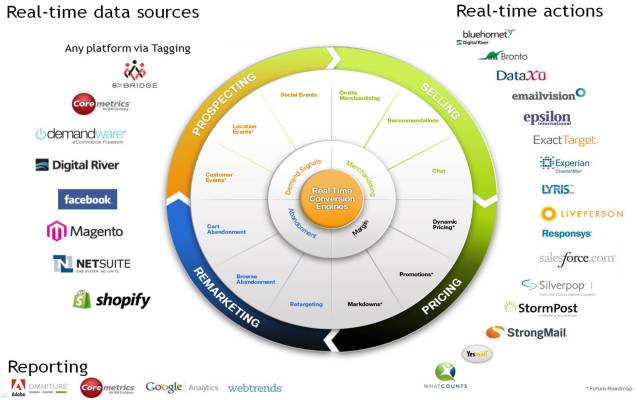There are plenty of products out there promising to help online merchants reach out to visitors who leave without making a purchase. However, SeeWhy founder and Chief Strategy Officer Charles Nicholls says they’re all too narrow — he describes everything currently on the market as “point solutions” that don’t fix the whole problem. That’s why the company is launching a new hub for different technologies, which it’s calling SeeWhy CORE.
As part of the research around its existing product, the SeeWhy Conversion Manager (which uses automatic email and social media campaigns to bring back customers who just left a merchant’s website), Nicholls says the company realized that there’s still a big opportunity here. After all, 97 percent of all visitors to e-commerce websites don’t buy anything. However, the odds increase dramatically if they’re a return visitor, so SeeWhy CORE wants to integrate the disparate tools available to bring that visitor back.
“If you can join the dots, if you can integrate all those pieces and data flows, the world looks much better,” Nicholls says.
So SeeWhy CORE integrates with 27 other cloud services, including email service providers, CRM systems, ad retargeters, web analytics services, e-commerce platforms, chat services, and social networks. With those integrations, customers should be able to see all of their data together, correlating multiple data sources to determine consumer interest and familiarity with a brand or product, then act accordingly, whether it’s sending an email or delivering a retargeted ad.
Features also include the SeeWhy Slider, a “light box” that delivers customized messages and offers to visitors — for example, offering them a link when they’re leaving a site to return to their shopping cart later.
Consumers may have mixed-to-negative feelings about shopping cart recovery in general, and retargeted ads in particular (I certainly don’t enjoy seeing ads chase me across the Web after I visit a random startup’s website for research), but Nicholls says one of the keys is to treat it more like customer service. For example, when businesses send a follow-up email, instead of aggressively trying to convince them to buy something, they should ask if everything was okay about the experience. He also says that SeeWhy determines where a shopper is in the purchase process, and customizes its messaging accordingly.
Nicholls says SeeWhy will also be moving its existing customers (which include Bare Escentuals, Lucky Brand, Remington, and Visa) onto the new CORE platform.
